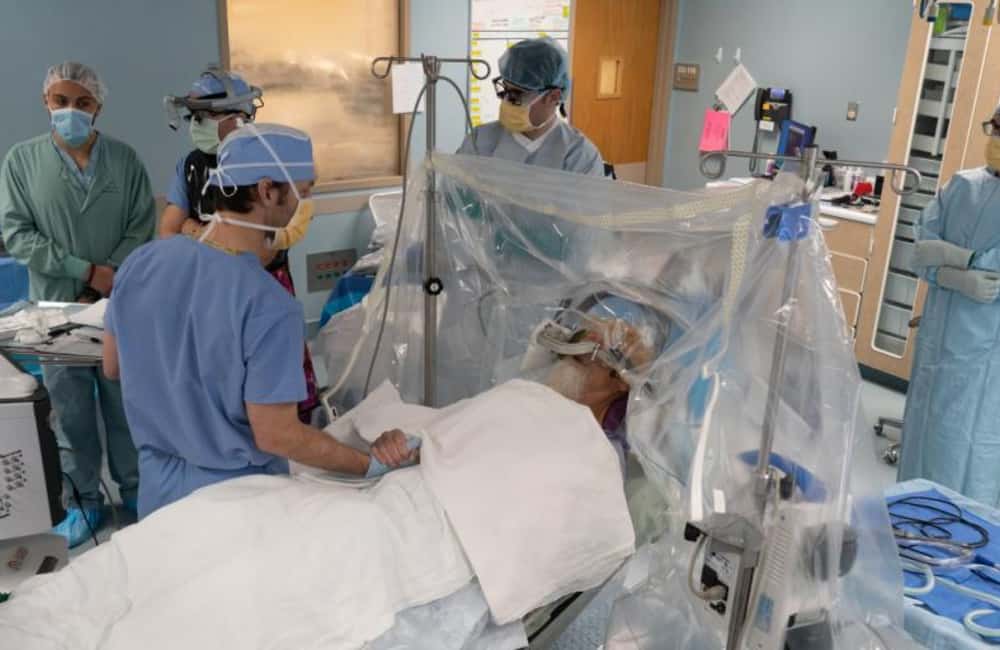The Department of Veterans Affairs‘ innovation chief is eyeing novel uses of new technology in the pursuit of continuing to improve veteran care, and one area he sees growing is in point-of-care manufacturing.
More form the News
“One of the market dynamics that’s shifting predominantly in health care is that concept of point-of-care manufacturing. This is using additive technology,” said Dr. Ryan Vega, VA’s chief officer of Healthcare Innovation and Learning, during an ACT-IAC conference. “If you think of traditional manufacturing, it’s subtractive. ‘Additive’ manufactures something layer by layer.”
Using computer-aided design (CAD) or 3D object scanners, additive manufacturing creates health care solutions with precise geometric shapes. These are built layer by layer with a 3D-printing process, which contrasts with traditional manufacturing that often requires machining or other techniques to remove surplus material.
Vega explained that the rise of 3D printing in medicine has enabled VA to create and replicate personalized veteran care. VA launched a series of new medical 3D-printing applications in March to provide advanced prosthetics care.
The agency is working to find more advanced and customizable ways of restoring mobility and limb function to veterans who have suffered critical injuries. VA’s 3D-printing network has been tasked with a range of local pilot programs, conducting autonomous research to personalize and improve veteran care.
VA has also used 3D printing to treat hearing loss. VA’s integrated 3D printing network team designed and created a 3D-printed stent that can be inserted in the external ear canal to keep it from collapsing and allow sound to pass through. The device is not surgically implanted and can be easily removed by the patient.
“We were able to come up with and, in a matter of months, actually get a developed medical device. So, you think of the idea of either surgery or coming up and making a medical device at the point of care, that’s in some ways revolutionary in terms of how we’re going to think about care and service for veterans,” Vega said.
VA is also developing the use of extended reality (XR), which can be used to help treat post-traumatic stress disorder (PTSD), anxiety and depression, as well as in clinical applications like pain management.
“We’re seeing the use of extended reality, whether it’s augmented or virtual, for a whole host of different types of care delivery, whether it’s virtual reality for physical therapy in the home or … surgical navigation and operating,” Vega said.
In a surgical setting, surgeons can use XR to see below patient layers by using advanced computer spatial technology that takes a CT scan or an MRI and layers it over the patient in the operating room. This allows the surgeon to see below the surface before they make the cut, leading to more precise, targeted interventions in the operating room.
“Those two types of emerging technologies are really growing. I think you’re going to see those markets change drastically and have a big impact on how we experience health care,” Vega said.
To support ongoing innovation, VA is focusing on human capital development to support new health care solutions. VA is continuing to accelerate workforce training programs to ensure that systems and solutions can effectively deliver on the agency’s mission and veteran needs.
Vega said it’s critical that new procedures and technologies are incorporated into training. By building in new modalities of care, trainees can conduct virtual care, telehealth and patient monitoring.
“It’s not to play on the rhetoric of, ‘You need to incorporate into the workflow.’ We may develop better workflows. If we’re not pushing the solutions into the training environment, we’re going to have physicians coming out that aren’t ready to use these [innovations],” Vega said.
Private-public and interagency partnerships will enable VA to deliver novel devices and innovations to veterans quickly. Instead of taking a technology-centered approach, the agency is developing robust care models, focusing on sustainment, and then looking to technology to enable these frameworks. Vega noted that as the venture capital model shifts, industry should design solutions that transcribe a “new standard of care,” as opposed to a one-off solution.
“The core of innovation is creating value. In order to do that, you have to invest in your people and the infrastructure,” Vega said. “The idea is that you can bring the best of the private sector and government together to co-design solutions that meet the mission of the agency, or joint collaborations that meet broad perspective — so benefits, delivery, digital, cyber — that’s really where you find the acceleration of innovations.”
Subscribe to AM Chronicle Newsletter to stay connected: https://bit.ly/3fBZ1mP
Follow us on LinkedIn: https://bit.ly/3IjhrFq
Visit for more interesting content on additive manufacturing: https://amchronicle.com/


